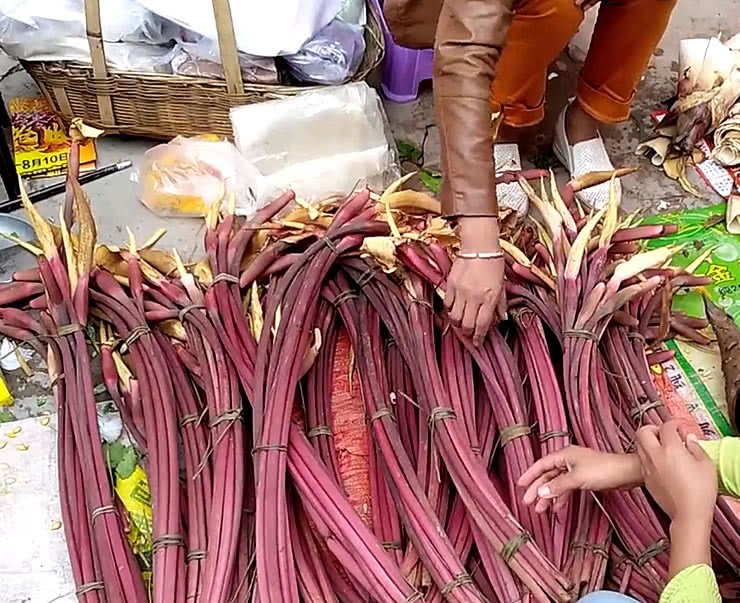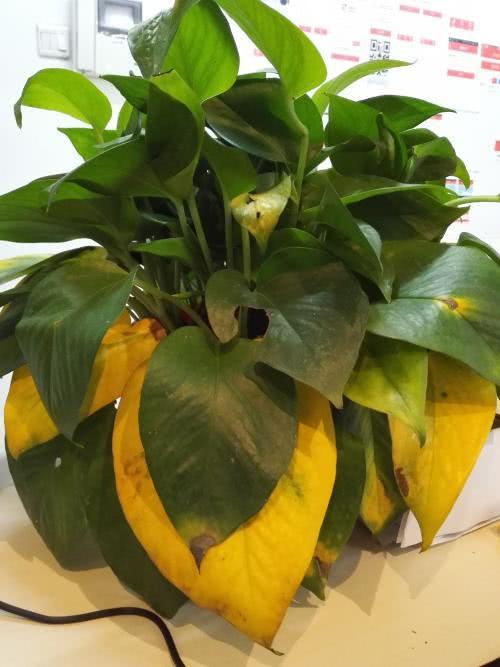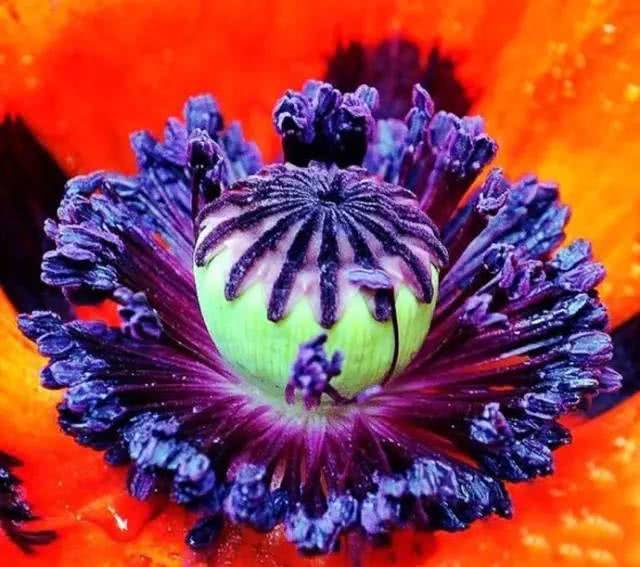80% of the people who have never eaten this kind of food sold by the roadside are nutritious and are good medicine for stomachache.

Walking past the roadside, I saw a lot of simple stalls selling vegetables. One of them attracted me. I saw long red poles, very much like taro poles, but the taro poles I saw were generally blue. I had never seen this kind of red one. Moreover, I had never eaten a taro pole since I was a child.
The aunt told me that this is called taro flower, also known as taro seedling flower, that is, the buds of taro, remove the hard tendons and buds above, can be directly fried to eat, nutritious, in rural areas, mainly used to treat stomachache, the effect is very good.
It turns out that taro flower is really a kind of traditional Chinese medicine and can be used as food. it is mainly distributed in the south of our country, such as Yunnan, and many people sell it in the market. The stem of taro flower is rich in nutrients such as protein, calcium, phosphorus, iron and vitamins, and the content of fluoride is high, which can also protect teeth.
This kind of vegetable, which is homologous to medicine and food, can not only enhance the immune function of the human body, but also be eaten as an anti-tumor medicinal diet. It is delicious and healthy.
We have eaten taro, but few people have eaten this kind of taro flower. in the countryside, we usually dig up taro and throw away all the taro sticks and flowers. In fact, taro flowers have a very strong fragrance, and taro sticks, it contains irritating substances, when eating is not handled well, it will make the tongue very numb!
The taro flower is in the taro leaves, yellow flowers, but generally rarely see taro bloom, it must meet certain high temperature conditions before it can blossom, and the flowering taro absorbs the nutrients of the taro stem, the taro yield will not be too high.
- Prev

Recently, green pineapple is always in love with yellow leaves every day. Green pineapple is almost bald. There are three reasons to pay attention to it.
Recently, I do not know whether the weather is too hot or something, the green apple at home is wilting, there is no spirit at all, and the phenomenon of yellow leaves appears every day. I usually pull out the yellow leaves when I see them. I feel that the green pineapple has become bald and unbleached recently.
- Next

The more beautiful the colorful poppy is, the more poisonous it is.
This is the legendary poppy, which is the raw material of opium. I didn't expect the flowers to be so beautiful. If you also like growing flowers, follow us! ...
Related
- Wuhan Hospital Iron Tree Blooming Result Was Instantly Frightened by the Gardener Master
- Which variety of camellia is the most fragrant and best? Which one do you like best?
- What is the small blue coat, the breeding methods and matters needing attention of the succulent plant
- Dormancy time and maintenance management of succulent plants during dormancy
- Minas succulent how to raise, Minas succulent plant pictures
- What are the varieties of winter succulent plants
- How to raise succulent plants in twelve rolls? let's take a look at some experience of breeding twelve rolls.
- Attention should be paid to water control for succulent plants during dormant period (winter and summer)
- Watering experience of twelve rolls of succulent plants
- Techniques for fertilizing succulent plants. An article will let you know how to fertilize succulent plants.

